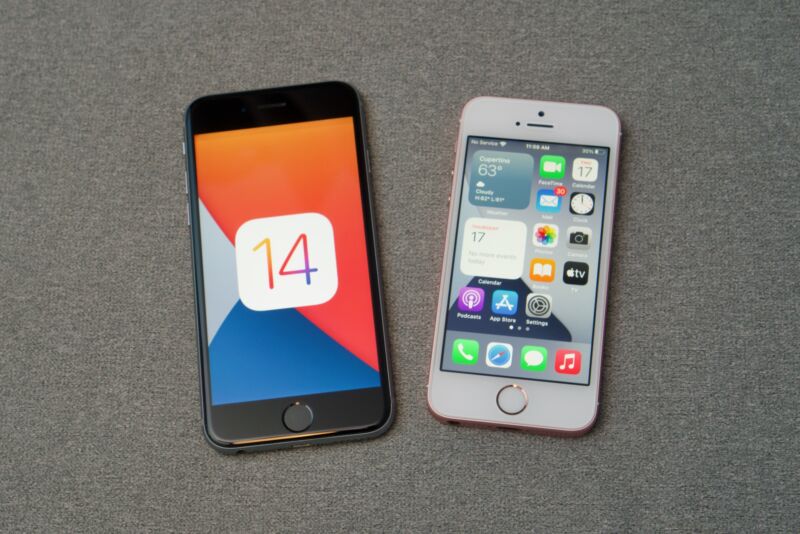iOS 14 on the iPhone 6S and SE: Performance is fine, other stuff is not

Enlarge / The iPhone 6S (left) and first-generation iPhone SE (right) running iOS 14. (credit: Andrew Cunningham)
It’s September, and you know what that means: shorter days, the first tentative tinge of chill in the night air, Halloween candy at the grocery store, and—most relevantly for us—a new version of iOS.
Apple supports its own phones with new software updates for years longer than any of the Android phone makers do, but that doesn’t mean that using a new version of iOS on the oldest-supported hardware is always pleasant. For iOS 14, that hardware is the iPhone 6S and the original 4-inch iPhone SE, the same as it was for iOS 13.
Originally released in late 2015 (the 6S and 6S Plus) and early 2016 (the SE), both phones include an Apple A9 processor and 2GB of RAM, and both devices boast the bare minimum you need for things like augmented reality apps or hardware accelerated decoding of h.265/HEVC video. In the move from iOS 12 to iOS 13, we found that the phones slowed down a little but remained perfectly usable; the same was true of iPadOS on older hardware, which we didn’t re-test this time around. This year, we were pleasantly surprised on the performance front, but the second-generation iPhone SE makes upgrading much easier to justify now than it was last year.
Read 12 remaining paragraphs | Comments
from Tech – Ars Technica https://ift.tt/35M8MLF
Comments
Post a Comment